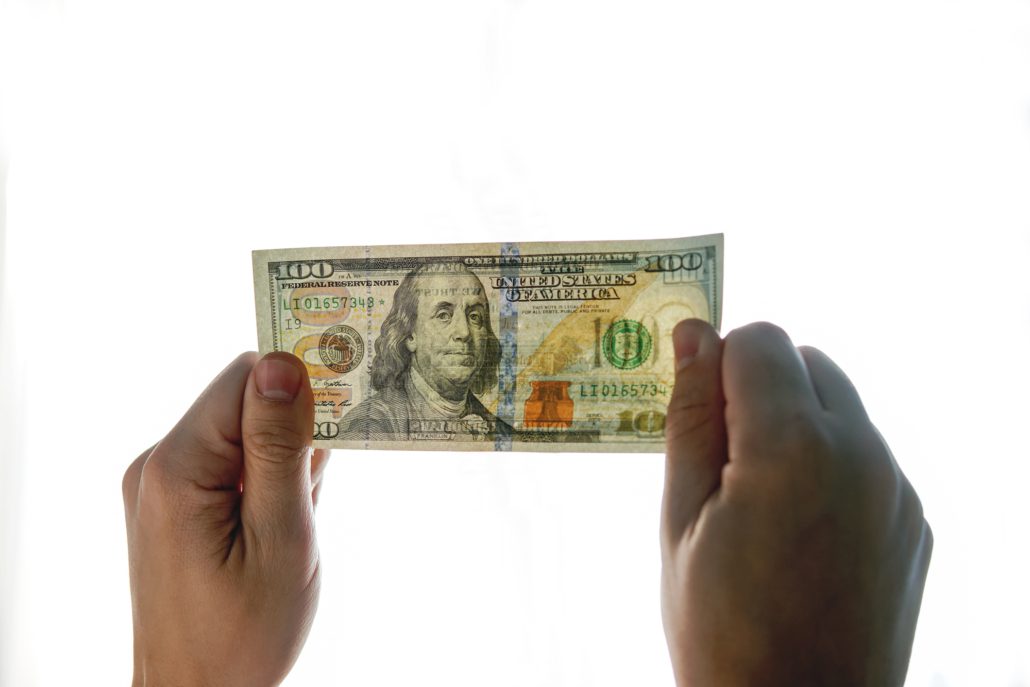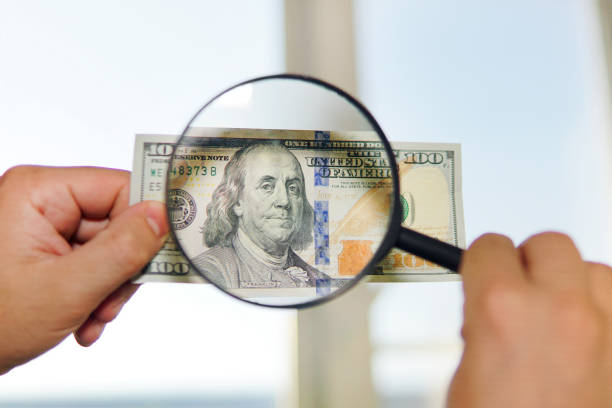How to Tell If Money Is Fake
“How to tell if money is fake?” Counterfeit money is a problem that has existed for centuries. As counterfeiters become more sophisticated, it can be increasingly difficult to tell the difference between real and fake money. However, there are a number of things you can do to help protect yourself from counterfeit bills.
Check the paper
One of the easiest ways to tell if a bill is fake is to check the paper. Real currency paper is made of a blend of linen and cotton, and has a raised texture. Counterfeit bills are often made of regular paper, which will feel smooth and flimsy.
Look for security features

Genuine bills have a variety of security features, including watermarks, security threads, and color-shifting ink. Counterfeit bills may not have all of these features, or they may be poorly imitated.
Watermark
A watermark is a faint image that can be seen when the bill is held up to the light. Genuine bills have a watermark of the portrait of the person on the bill. Counterfeit bills may not have a watermark, or the watermark may be blurry or poorly imitated.
Security thread
A security thread is a thin, embedded thread that runs through the bill. Genuine bills have a security thread that changes color when the bill is tilted. Counterfeit bills may not have a security thread, or the security thread may not change color.
Color-shifting ink

Color-shifting ink is a type of ink that changes color when the bill is viewed from different angles. Genuine bills have color-shifting ink on the denomination numeral and the Federal Reserve seal. Counterfeit bills may not have color-shifting ink, or the color-shifting ink may not work properly.
Examine the details
Take a close look at the bill’s portrait, seals, and other details. Real bills are very well-printed, and the details should be sharp and clear. Counterfeit bills may have blurry printing or other imperfections.
Portrait
The portrait on a genuine bill is very detailed and realistic. The eyes should be clear and focused, and the hair should be well-defined. Counterfeit bills may have a blurry or poorly defined portrait.
Seals
The seals on a genuine bill are very sharp and clear. The details should be easy to see, even without a magnifying glass. Counterfeit bills may have blurry seals, or the details may be poorly defined.
Other details
Take a look at the other details on the bill, such as the denomination numeral, the Federal Reserve seal, and the series and date. All of these details should be sharp and clear on a genuine bill.
Compare the bill to a known real bill
If you have a real bill of the same denomination, compare it to the bill you are questioning. Look for any differences in the paper, security features, or details.
Use a counterfeit detector pen

Counterfeit detector pens use a special ink that reacts to certain chemicals found in counterfeit bills. If you draw on a counterfeit bill with a counterfeit detector pen, the mark will turn black or brown.
Counterfeit detector pens are not 100% reliable, but they can be a helpful tool for detecting counterfeit bills. If you are using a counterfeit detector pen, be sure to follow the instructions carefully.
Take the bill to a bank or other financial institution
If you are still unsure whether a bill is real, take it to a bank or other financial institution. They have trained staff and equipment that can help them to identify counterfeit bills.
What to do if you receive counterfeit money
If you receive counterfeit money, there are a few things you should do:
- Do not spend the money.
- Report the counterfeit money to the police or to the U.S. Secret Service.
- Write down the serial number of the counterfeit bill.
- If possible, get the name and address of the person who gave you the counterfeit bill.
How to protect yourself from counterfeit money

There are a number of things you can do to protect yourself from counterfeit money:
- Be aware of the latest counterfeit detection techniques. Counterfeiters are constantly developing new methods, so it is important to stay informed.
- Be careful when accepting cash from strangers.
- If you are unsure whether a bill is real, do not accept it.
- Use a counterfeit detector pen if you are unsure about a bill.
- Take the bill to a bank or other financial institution if you are still unsure whether a bill is real.
Here are some additional tips for detecting counterfeit money:
- Check the serial number. The serial number on a genuine bill is unique and will not be repeated on any other bill. Counterfeit bills may have duplicate serial numbers, or the serial number may be missing or incomplete.
- Check the edges of the bill. The edges of a genuine bill are smooth and even. Counterfeit bills may have rough or uneven edges.
- Check the printing. The printing on a genuine bill is sharp and clear. Counterfeit bills may have blurry or poorly defined printing.
- Check the color. The colors on a genuine bill are bright and vibrant. Counterfeit bills may have dull or faded colors.
- Check the size. A genuine bill is a specific size and shape. Counterfeit bills may be too large or too small, or they may have the wrong shape.
If you are unsure whether a bill is real, it is always best to err on the side of caution and not accept it. You can take the bill to a bank or other financial institution to have it verified.
Here are some common mistakes that people make when trying to detect counterfeit money:
/cloudfront-us-east-1.images.arcpublishing.com/gray/GUPJKQXO6VDHJMCK7VOWXEOGTE.png)
- Relying on one security feature. Genuine bills have a variety of security features, and no single feature is 100% reliable. Counterfeiters are becoming increasingly skilled at imitating security features, so it is important to look for multiple security features on a bill.
- Not checking the details. Take a close look at the bill’s portrait, seals, and other details. Real bills are very well-printed, and the details should be sharp and clear. Counterfeit bills may have blurry printing or other imperfections.
- Not comparing the bill to a known real bill. If you have a real bill of the same denomination, compare it to the bill you are questioning. Look for any differences in the paper, security features, or details.
- Not using a counterfeit detector pen. Counterfeit detector pens use a special ink that reacts to certain chemicals found in counterfeit bills. If you draw on a counterfeit bill with a counterfeit detector pen, the mark will turn black or brown.
- Not taking the bill to a bank or other financial institution. If you are still unsure whether a bill is real, take it to a bank or other financial institution. They have trained staff and equipment that can help them to identify counterfeit bills.
It is important to be aware of the latest counterfeit detection techniques, as counterfeiters are constantly developing new methods. By following these tips, you can help to protect yourself from counterfeit money.
Conclusion
Counterfeit money is a serious problem, but there are a number of things you can do to protect yourself. Be aware of the latest counterfeit detection techniques and take the time to examine your bills carefully. Check the paper, look for security features, examine the details, compare the bill to a known real bill, and use a counterfeit detector pen. If you are still unsure whether a bill is real, take it to a bank or other financial institution.



